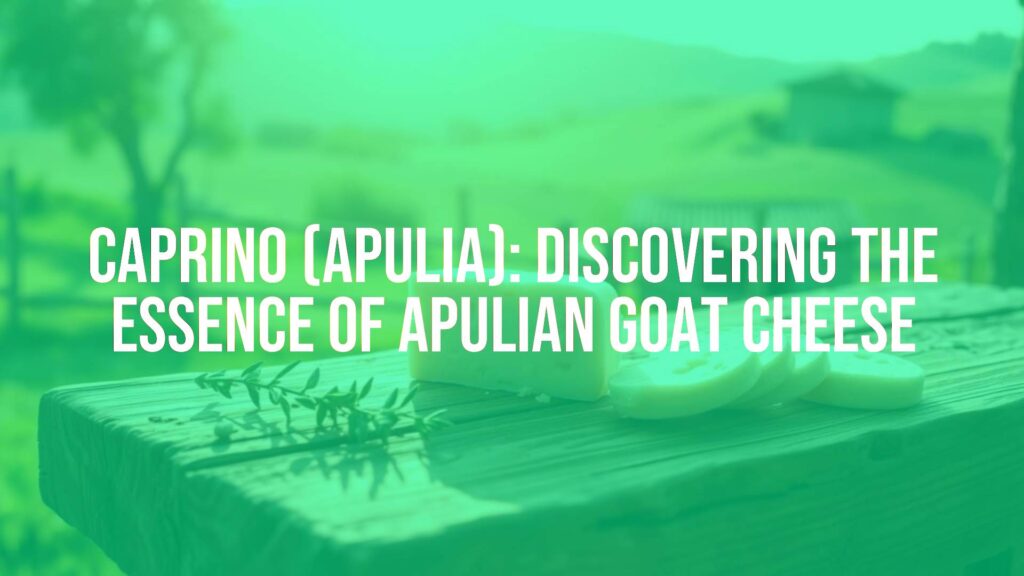Introduction to Caprino from Apulia
Among the celebrated spectrum of Italian cheeses, Caprino from Apulia shines as a distinctively local creation. Born from the sun-drenched pastures and unique terrain of southern Italy, Caprino (from “capra,” the Italian word for goat) is a soft to semi-hard goat cheese whose delicate flavors and rustic appeal embody the agricultural heritage of the Apulia (Puglia) region. This cheese stands apart for its artisanal tradition and nuanced character, making it a prized delicacy both at home and abroad.
Unique Features and Craftsmanship
Caprino from Apulia exhibits a gentle tanginess balanced by creamy notes, a hallmark of cheeses crafted from high-quality goat’s milk. Its texture varies—from fresh and spreadable to aged and crumbly—depending on the producer and maturation period. The fresh iteration offers a lactic, clean flavor and a delicate aroma, whereas aged varieties develop fuller, slightly piquant profiles with a firmer consistency and may be coated in herbs or olive oil to enhance preservation and taste.
The production process is steeped in time-honored techniques. Local cheesemakers source milk from indigenous Apulian goats, known for their robust health and diet of wild herbs. The milk is gently heated and coagulated with natural rennet, then shaped by hand into small logs or rounds. Maturation can be brief or extended, producing a range of Caprino types to suit different palates and culinary uses.
Historical and Regional Context
Caprino has roots that reach deep into Apulia’s rural past. For centuries, goat herding has been integral to the region’s agricultural landscape, with families producing Caprino as both sustenance and trade. Its mildness and digestibility made it a staple food for shepherds and rural communities. Historically, it has also played a symbolic role in regional festivities and gatherings, demonstrating its importance beyond simple nutrition.
Today, Caprino remains emblematic of Apulian tradition and is often made in small batches by local artisanal dairies dedicated to preserving centuries-old methods.
Serving and Enjoyment
Caprino cheese is wonderfully versatile on the table. The fresh version is typically enjoyed as an antipasto, spread on rustic Apulian bread, crostini, or paired with ripe tomatoes and olive oil. Light, slightly salted, and with an unmistakable fresh goat flavor, it complements salads adorned with regional olive oils and seasonal vegetables.
Aged Caprino, meanwhile, can be sliced atop hearty salads, crumbled on pasta dishes, or savored alongside honey, fig jam, or robust local wines such as white Verdeca or rosé from Salento. Its adaptability makes it an ideal feature on a traditional cheese board, perhaps accompanied by olives and nuts. Caprino may also be featured in simple savory pies, enriching fillings with its creamy yet assertive character.
Cultural Significance and Pairings
In Apulian culture, Caprino is more than simply a cheese—it is a vibrant representation of regional identity and resourcefulness. The cheese graces festival tables, Sunday gatherings, and is a common ingredient in both everyday meals and celebratory fare. Its role in connecting generations through shared culinary rituals reflects not just local pride but a respect for the land and the animals that sustain it.
For an authentic Apulian pairing, Caprino is best enjoyed with crusty pane di Altamura, a drizzle of extra-virgin olive oil, and a glass of local wine. Simplicity—letting the cheese’s fresh, grassy notes shine—is often the favored approach.
Tips for Best Enjoyment
Caprino is at its prime when consumed fresh, but even aged versions should be brought to room temperature before serving to allow the full bouquet of aromas to unfold. Seek out local or artisanal producers for the most authentic flavors, and experiment with pairings to explore both its versatility and its distinct Apulian character.

